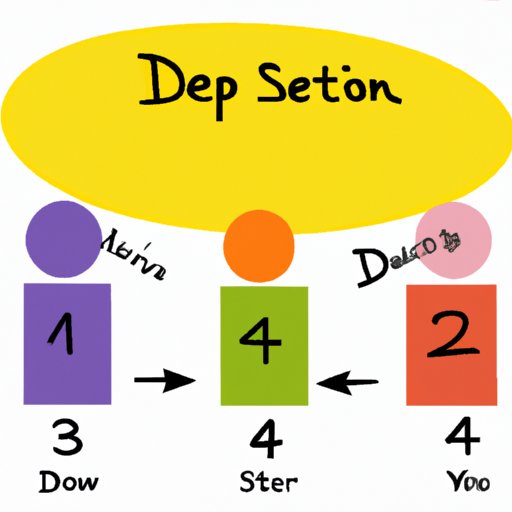Introduction
Making decisions is a part of life, but it can be difficult to know which choice will have the best outcome. To help make sense of the situation and make an informed decision, it’s important to follow a systematic process. The decision making process involves six steps to help you make the best possible decision.

Step 1: Identifying the Problem
The first step in the decision making process is to identify the problem or issue that needs to be addressed. This requires understanding what needs to be decided and considering potential solutions and consequences. It’s important to take the time to consider all aspects of the problem so that you can make an informed decision.
Step 2: Gathering Information
Once the problem has been identified, it’s time to gather information to help make the best decision. Research relevant data and examine different perspectives to gain a better understanding of the issue. Consider any potential biases or limitations when collecting information.
Step 3: Analyzing Alternatives
In the third step of the decision making process, it’s important to analyze the available options. Assess the pros and cons of each alternative, determine relevant criteria, and decide which option is the most suitable. Make sure to weigh all factors carefully when analyzing alternatives.

Step 4: Making a Decision
After analyzing the available options, it’s time to make a decision. This is where you need to make an informed choice based on all the information gathered. Consider the potential risks and rewards associated with each alternative before making a decision.
Step 5: Implementing the Decision
Once a decision has been made, it’s time to take action. This involves implementing the chosen plan of action and evaluating the results. If necessary, adjust the plan as needed to ensure a successful outcome.

Step 6: Learning from the Experience
The sixth and final step in the decision making process is to learn from the experience. Reflect on the outcome and consider what could have been done differently. Adapt for future decisions by incorporating lessons learned into your decision making process.
Benefits of Following the Decision Making Process
Following the decision making process has numerous benefits. It helps to improve efficiency by organizing the decision making process and minimizing risk by considering all factors. It also ensures that decisions are made based on the best available information.
Common Mistakes to Avoid in the Decision Making Process
When following the decision making process, there are some common mistakes to avoid. One of the most common mistakes is not considering all options, which can lead to a poor decision. Another mistake is not seeking advice from others, which can provide valuable insights into the problem.
Real-World Examples of the Decision Making Process
The decision making process can be applied to both business and life decisions. For example, in business, a manager may use the decision making process to decide how to allocate resources or which product to launch. In life, a person may use the decision making process to decide whether to change careers or move to a new city.

Tips on How to Improve Your Decision Making Process
To improve your decision making process, it’s important to develop a systematic approach. Take the time to consider all options and seek advice from others when necessary. Additionally, create a list of criteria to help you evaluate each option and make an informed choice.
Conclusion
The decision making process involves six steps to help you make an informed decision. Identify the problem, gather information, analyze alternatives, make a decision, implement the decision, and learn from the experience. By following this process, you can improve efficiency, minimize risk, and make better decisions.
(Note: Is this article not meeting your expectations? Do you have knowledge or insights to share? Unlock new opportunities and expand your reach by joining our authors team. Click Registration to join us and share your expertise with our readers.)
